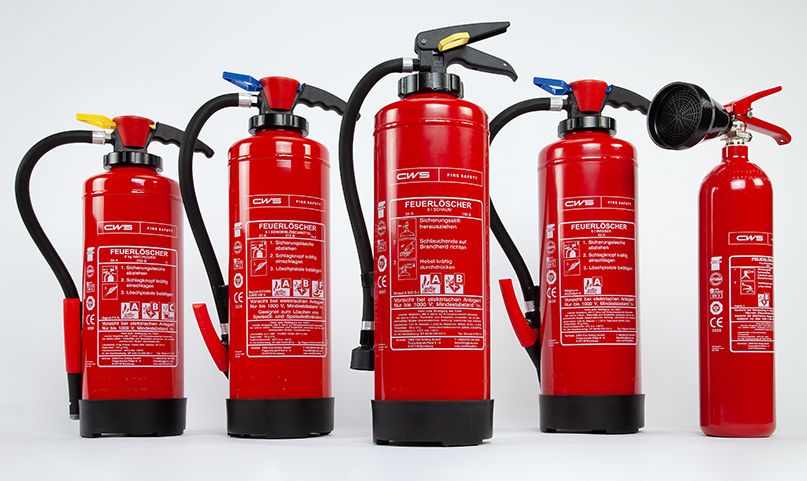how often does fire extinguisher need to be serviced
Fire extinguishers are an essential component of any fire safety plan, providing a vital means of extinguishing small fires before they become larger and more dangerous. However, like any piece of safety equipment, fire extinguishers require regular maintenance and servicing to ensure they are ready for use in case of an emergency. Neglecting to service fire extinguishers can have serious consequences, such as reduced effectiveness, damage, or even complete failure in a fire emergency.
Unraveling the Mystery: How Often Should a Fire Extinguisher Be Serviced?
Imagine you're in a world where fire extinguishers are the unsung heroes, quietly waiting to save the day. These indispensable devices act as a guardian against the perils of fire, protecting both lives and property. In this illuminating piece, we'll delve into the importance of regular upkeep, the myriad types of fire extinguishers, recommended service intervals, and the telltale signs that your fire extinguisher may require attention.
Diversity of Fire Extinguishers
Fire extinguishers come in a vibrant array of varieties, each tailored to combat specific classes of fire. Let's explore the most prevalent types:
1. Water-based extinguishers - Designed for Class A blazes (those involving solid combustibles like wood, paper, and textiles).
2. Carbon dioxide extinguishers - Effective against Class B (flammable liquids) and Class E (electrical equipment) fires.
3. Foam extinguishers - Suitable for both Class A and Class B fires.
4. Dry powder extinguishers - Applicable to Class A, Class B, and Class C (flammable gases) fires. Some are also suitable for electrical fires.
5. Wet chemical extinguishers - Crafted for Class F (cooking oil and fat) fires and also effective against Class A fires.
Significance of Fire Extinguisher Upkeep
The regular maintenance of fire extinguishers is crucial for a myriad of reasons:
1. To ascertain that the extinguisher functions flawlessly during emergencies.
2. To prolong the lifespan of the extinguisher.
3. To abide by local fire safety regulations and insurance prerequisites.
Frequency of Servicing Fire Extinguishers
The intervals for fire extinguisher servicing are contingent upon several factors, such as the manufacturer's recommendations, inspection stipulations, and local ordinances. Here's a general guideline:
1. Manufacturer's Advice - Always adhere to the guidance provided by the fire extinguisher manufacturer.
2. Monthly Assessments - Undertake a visual inspection each month to detect any indications of damage, corrosion, or tampering.
3. Yearly Maintenance - A certified expert should execute a comprehensive examination and servicing of the extinguisher at least once per year.
4. Six-year Overhaul - Every six years, the extinguisher should undergo a more in-depth service, which may entail internal assessment, replacement of components, and recharging.
5. Hydrostatic Evaluations - Depending on the extinguisher type, hydrostatic testing is mandated every 5, 10, or 12 years to guarantee the cylinder can endure pressure.
Indicators That Your Fire Extinguisher Needs Attention
Be vigilant for these signs that your fire extinguisher may necessitate servicing:
1. Damaged or absent safety seal - A broken seal may hint at tampering or usage.
2. Corrosion or rust - These can undermine the extinguisher's structural integrity and diminish its efficacy.
3. Dented or impaired cylinder - Physical damage can debilitate the extinguisher and provoke malfunction.
4. Illegible or missing labels - The labels supply vital information for proper utilization and maintenance.
5. Low or high pressure - Inspect the pressure gauge to confirm it's within the recommended range.
Process of Fire Extinguisher Servicing
Amid a fire extinguisher service, a skilled professional will typically carry out the following tasks:
1. Inspect the extinguisher for visible indications of damage or wear.
2. Verify the pressure gauge to ensure it's within the recommended range.
3. Scrutinize the hose, nozzle, and valve for damage or obstructions.
4. Weigh the extinguisher to confirm it contains the correct quantity of extinguishing agent.
5. Clean and lubricate the extinguisher's moving components.
6. Replace any impaired or worn parts.
7. Recharge the extinguisher, if necessary.
8. Attach a service tag signifying the service date and the technician's details.
Selecting an Extinguisher Maintenance Provider
Electing a trustworthy and experienced service provider is essential for the proper maintenance of fire extinguishers. When choosing a provider, contemplate the following factors:
1. Certification - Ensure the provider is certified to service fire extinguishers and complies with pertinent industry standards.
2. Experience - Opt for a provider with a proven history of servicing fire extinguishers in your specific industry or setting.
3. Reputation - Seek online reviews and solicit recommendations from colleagues or acquaintances.
4. Services offered - Choose a provider that can address all your fire safety needs, including inspections, maintenance, and training.
5. Customer service - Select a company that responds promptly to your inquiries and offers clear communication.
# Consistent fire extinguisher servicing is indispensable for preserving the safety and effectiveness of these vital safety instruments. By adhering to the suggested servicing intervals, paying heed to the signs that indicate a need for service, and selecting a qualified service provider, you can ensure that your fire extinguishers are poised to safeguard lives and property in the face of a fire emergency.
FAQs
Q: How can one decipher the opportune moment to supplant a fire extinguisher?
A: Generally, fire extinguishers boast a lifespan stretching 10-12 years. However, should an extinguisher reveal indications of damage, corrosion, or malfunction during an examination, immediate replacement becomes paramount.
Q: Can one undertake the servicing of a fire extinguisher independently?
A: It's inadvisable. Expert technicians brandish essential training, equipment, and certification for the apt servicing of fire extinguishers. Inaccurate servicing might precipitate extinguisher failure amidst an emergency.
Q: In the aftermath of a fire extinguisher's utilization, what steps ought to be pursued?
A: Irrespective of whether partially discharged, a previously used fire extinguisher warrants inspection and recharging by a certified connoisseur before being declared fit for reuse.
